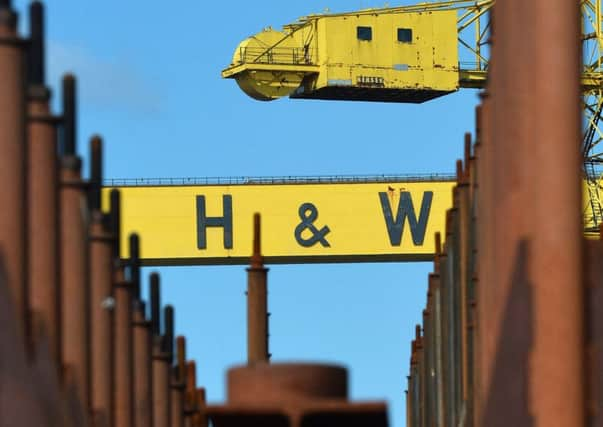Royal Navy contract could be vital lifeline for Harland & Wolff shipyard


East Belfast MP Gavin Robinson described the decision – giving the green light for the Babcock-led consortium to build the Type 31e Royal Navy frigates – as a “boon” for the Belfast shipyard and said it was “hugely encouraging”.
The news come as Belfast Harbour launched a strategic plan to invest £254 million in new infrastructure which will help generate 7,000 new jobs.
Advertisement
Hide AdAdvertisement
Hide AdThe development at Harland & Wolff is a vital lifeline for a company that went into administration just over a month ago.
Mr Robinson said the successful bid involved the shipyard making component parts with the finishing work carried out by Babcock, but said there are still many things that have to fall into place before any new work can begin in Belfast.
“There is genuine cause for optimism,” he said.
“Ultimately it is a good pipeline of work, but the administrator is going through his process with the bidders for the yard, and my understanding is that this sort of work is something [the potential buyers] would be keen on doing, so it’s very good news from that perspective but some discussions still have to take place.
“It’s very encouraging.”
The awarding of the Ministry of Defence contract to the engineering giant Babcock is expected to be formally announced later this year.
Advertisement
Hide AdAdvertisement
Hide AdA total of five ships will be assembled at the Rosyth Dockyard in Scotland but their construction will involve supply chains throughout the UK.
It is understood that if the Belfast shipyard can successfully exit administration into new ownership then its share of the defence contract could sustain a workforce for up to six years through steel fabrication alone.
Best know for building the Titanic, the Belfast yard entered administration in earl August with the process being overseen by accountancy firm BDO.
Workers have been staging a 24-hour occupation of the site in an effort to save the 120 jobs at risk.
Advertisement
Hide AdAdvertisement
Hide AdOne of the union leaders involved in the campaign, Unite’s Susan Fitzgerald, said yesterday’s news “highlights that the shipyard in Belfast has a future as a viable shipbuilder”.
She said: “Just weeks ago politicians including the British government had written off this yard, saying it had no future. Through their courageous stand the workforce at Harland & Wolff have held open the door for the company to participate in this work – they have kept this shipyard in the game.”
Ulster Unionist peer Lord Empey said he was delighted “that this news places Harland & Wolff back at the centre of UK shipbuilding,”
Lord Empey said the Type 31e frigate has been “designed to attract export orders” as well as from the Royal Navy, and added: “The activities in the Gulf this summer, when Iranians captured a British flagged tanker, illustrated the lack of surface ships that the Navy has at its disposal, and was a massive embarrassment for the United Kingdom.
Advertisement
Hide AdAdvertisement
Hide Ad“With a short time to design and build, it is hoped to have the first of the new frigates in the water by 2023. It couldn’t come soon enough.”
Meanwhile, announcing what it called its “ambitious growth plans” – including a development of 250 apartments – Belfast Harbour said: “Belfast Harbour has announced its ambition to become the best regional port in the world and create an iconic waterfront for Belfast that will be an attractive place for people to live, work and visit as well as a hub for inward investment and tourism.”